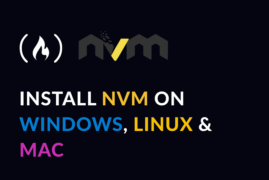The software product you’re using isn’t new to you. You’re used to being prompted to ‘update’, or to noticing that something works a little better than it did yesterday. It never occurs to you to pay much attention to software update notifications. One day, you receive a notification asking you to complete a ‘software upgrade’. Why did the provider change the word use? Doesn’t that sound like it’s always been the same?
They sound (and read) similar, and both require you to change your product, but they cover different aspects of software maintenance. The difference between a software update and a software upgrade is like the difference between servicing your old bike and buying a new one.
Why is it important to know the difference between a software update and a software upgrade?
Software update
Unlike software upgrades, software updates require the existing software program you’re using for them to work. They offer small, frequent improvements rather than major changes.
Often, software updates (also known as patches) are free downloads that are necessary for your product to continue running.
Because software updates address newly discovered security issues, fix bugs, and add support for new hardware and drivers. They tweak and improve the way the program works, but they don’t fundamentally change it.
As a simple analogy, software updates modify, fix, and alter your current software program on a regular basis. They’re the equivalent of regularly oiling your bicycle.
Software upgrade
There are a few different types of software upgrades. Instead of building on your existing software, a software upgrade is a completely new version of that software product. It’s like buying a new bike that’s the same make as your old one, but it’s already got all the flashy new features. Plus, it has a host of new features that make it a superior bike to your old one.
The upgrade replaces the old product. Upgrades make major changes to your current version of the program, such as overhauling the user interface, adding new features, or changing key structural components.
A software upgrade is a much bigger process than an update. Updates are often small and free, and rarely demand much attention, but they’re not always necessary for a program to continue running. During a product upgrade, a new purchase or pricing system may be required. Because of this, companies often offer existing customers incentives to upgrade their software. For example, they might reduce the upgrade cost or stop supporting their legacy program.
Since a software upgrade is more complex than an update, it is less common than an update. It isn’t something that will slip under the radar like a quick bug fix. It is a software show-stopper that involves a team of marketing, customer service, and sales – not just developers working on perfecting the product.
What they do and why you need them
Software updates:
Protect you against security risks: Having outdated software with no updates increases the risk of a security breach. If you do not update your software, your product may become more susceptible to security threats due to new vulnerabilities and malware. Updates are a way to fix and safeguard your software to help reduce these risks.
Fix bugs and improve functionality: Even though software is rigorously tested before it is sold or downloaded, some bugs, glitches and other problems can still make it through. Updates fix these issues and keep your program running smoothly.
Software upgrades:
Offer new features and enhanced functionality: Upgraded software usually incorporates new features, incorporates new technology and advancements, and runs smoother and faster. They also often include ways to save energy and improve power consumption.
Will continue to receive updates: The software companies will stop supporting older versions of software after a while. This means that old or legacy software will eventually stop working with your hardware and operating system. Additionally, older software is less secure against hackers and malware than modern software.
Repairing and exchanging
Upgrading software means getting something better, while updating means fixing what you already have.
A software update and a software upgrade both affect product performance, and are crucial to security, hardware compatibility, and a smooth user experience.




Leave a comment